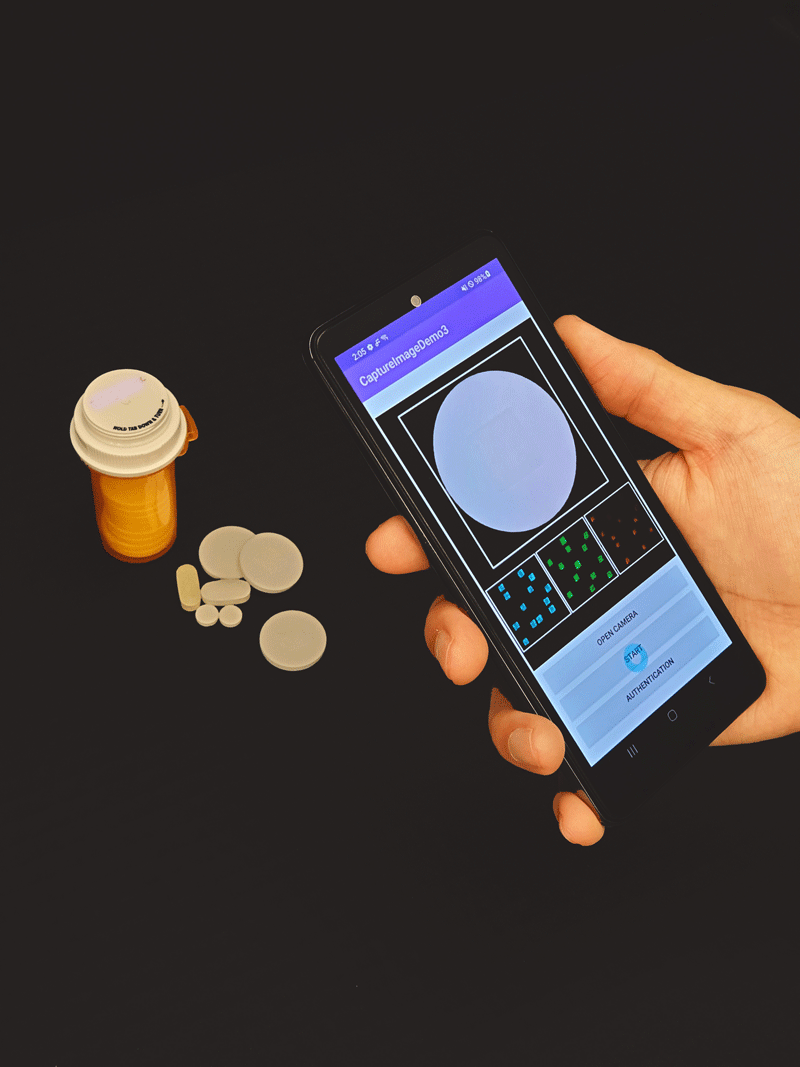Fluorescent silk tags to verify medicines
Edible fluorescent silk tags embedded into pills and liquids are being proposed to verify medicines and reduce counterfeiting.

Codes within the tags, invented by scientists at Purdue University, USA, can be read by a smartphone app to validate the source and quality of drugs. The researchers suggest the technology could tackle the growing infiltration of fake medicines due to the proliferation of online pharmacies and global supply chains.
While pharmaceutical companies label their packaging with bar codes, QR codes, holograms, or radio frequency identifiers, there are not equivalent codes to verify individual pills or liquids.
Research co-lead Young Kim says of the novel tags, ‘i) This code is composed of all proteins (silk fibroin and fluorescent protein) without using synthetic polymers or materials. Simply it is edible and digestible. ii) Multiple distinct fluorescence emission colours are used to enhance an encoding capacity as well as attack resistance. iii) This code is imperceptible and invisible because of the fluorescence properties.’
Silkworms have been genetically modified to produce silk fibroins with a cyan, green or red fluorescent protein. Dissolved fluorescent silk cocoons are used to make the fluorescent polymer solutions, which are then applied to a thin 9mm-wide film of white silk in a seven-by-seven grid.
By shining blue violet, blue and green light, the researchers reveal the 3D cyan, green and red square patterns, respectively, with an optical filter on a camera phone opening a webpage much like a QR code.
As the silk proteins are broken down by gastrointestinal enzymes, the researchers suggest that the silk codes can indeed be digested.
‘Fluorescent silk fibroin can easily be processed into polymeric materials for fabricating a variety of types of rigid or flexible structures with tuneable mechanical and optical properties. Modernised silkworm farming (i.e. sericulture) can potentially offer a sustainable, scalable and eco-friendly production strategy of such recombinant proteins in an economical and industrially relevant manner without consuming fossil fuels and raw materials,’ Kim says.
The researchers have tested the codes with a clear whiskey bottle to see if they would work for alcohol or indeed liquid medicine.
Addressing the possibility of degradation, Kim says that the silk proteins are durable due to their crystallinity and can last over two years. If dark or opaque packaging with light protection is used, the shelf life is extended. The edible and organic properties means they can be disposed of immediately after being scanned, or consumed.
The researchers have developed their own mobile app but only tested it in simulated settings. However, they think that setting up data management and security will be relatively straightforward because of existing barcodes and QR codes.
In the future, they foresee the need for interoperability of serialisation solutions to seamlessly integrate the operations and business processes across organisations.
In scaling up, the researchers plan to focus on recombinant silk proteins that can be mass-produced within several host systems with typical agricultural means. They say that biomanufacturing methods are highly eco-friendly, scalable and sustainable.

